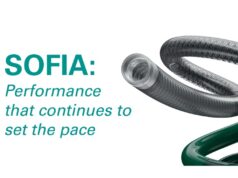
The treatment of wide neck bifurcation aneurysms is more incomplete and dangerous than you think, says Adam Arthur (professor of Neurosurgery, University of Tennessee Health Sciences Center, Semmes-Murphey Neurologic and Spine Clinic, Memphis, USA). Talking at the 15th annual meeting of the Society of NeuroInterventional Surgery (SNIS; 23–27 July, San Francisco, USA), he highlighted the unmet clinical need of wide neck bifurcation aneurysms and how the WEB Intrasaccular Therapy (WEB-IT) study is helping to address this.
Wide neck bifurcation aneurysms account for a large patient population, around 30–40% of all aneurysms, and, due to their complex physiology, they are difficult to treat and often need to be treated surgically. This means that research on other options, like intrasaccular flow disruption, is important.
The safety rates for treating wide neck aneurysms vary greatly from 2.7–9.4% and the same is true for occlusion rates. Data from the WEBCAST trial shows complete occlusion in 56% of cases, with 85% of cases having adequate occlusion compared to 29% of aneurysms achieving complete occlusion and 82% achieving adequate occlusion in the CERECYTE (coils) trial. Simulation device training can help physicians prepare and practise their technique with a new device before treating patients. In the WEB-IT study a neurovascular replicator (Vascular Simulation) was used. This allowed physicians to learn how to size and use the Woven Endobridge (WEB, MicroVention) intrasaccular device correctly, as the study had zero roll-in cases.
The WEB-IT study is a prospective, multicentre, single arm study looking at the efficacy of the WEB intrasaccular device in treating wide/challenging neck bifurcation aneurysms. Enrolment began in August 2014 and was completed in March 2016. The device is designed so that they highest density/lowest porosity of mesh is in the area of highest flow.
A paper, published in the Journal of NeuroInterventional Surgery, looked at the feasibility of training physicians taking part in the WEB-IT trial using a simulator, with positive results. “The level of safety achieved during procedures was directly comparable to that observed within a group of experienced European physicians,” wrote Arthur, et al.
The implementation of the replicator-based training programme involved an initial skill building session where physicians deployed devices in several aneurysms. These aneurysms had varying levels of complexity and allowed investigators to become more comfortable with the procedure and communication with supervising protocol. This was followed by the replication of patient specific anatomy and pre-case rehearsal under the guidance of both supervisors and experienced clinical specialists. Experience obtained during the surgical rehearsal on patient-specific anatomy, which was modelled from imaging data from a patient in the trial, helped operators to anticipate potential challenges with respect to access, device sizing, and device deployment.
The ability to perform patient-specific replicated cases within the operator’s angiography suite—on their own angiography equipment and with their assistants and full surgical team participating—provided a unique opportunity for the entire team to gain experience and familiarity with the WEB device and procedure. “One particularly helpful aspect of this interaction was that it allowed the team to establish a lexicon of terms to optimise communication during the actual cases,” state the authors.
“In our experience, conventional catheter-based rotational three-dimensional angiography provided the best possible data from which to construct a stereolithographic file that most accurately depicted the anatomy.”
When computed tomographic angiography or magnetic resonance angiography data were used, they found that the replicated anatomy was less reliable.
The use of the system provides the operator with an opportunity to use actual devices within a validated physiological system, but it is important to acknowledge that this benefit comes at a financial expense as numerous catheters, wires, and implants are required for the completion of a comprehensive replicator training. While basic procedural metrics can be compared with those of similar trials, there was no prospective intent, nor ability, to prove the effect of this replicator-based training programme within the US WEB-IT trial.













